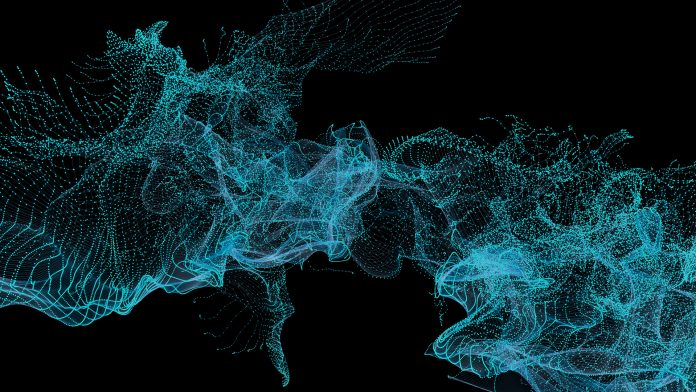Dr Hannes Hübel, the project manager of OPENQKD speaks to Innovation News Network about the adoption of quantum key distribution in Europe.
OPENQKD, a pilot project funded by the European Commission, set to run for three years, is already underway. Its goal is to develop an experimental testbed using quantum key distribution, an extremely secure form of encryption that has the potential to keep telecommunications, healthcare, electricity supplies and government services safe from cyberattacks.
Dr Hannes Hübel, senior scientist at the Austrian Institute of Technology and project manager of OPENQKD, speaks to Innovation News Network’s digital editor, Caitlin Magee, about quantum key distribution and OPENQKD’s plans to increase the adoption of the technology in Europe.
Quantum communication and its applications
Quantum communication is a technology that uses quantum mechanical objects to perform communication tasks. In most cases those quantum objects are photons (single particles of light), they are easy to produce and to detect and most importantly travel at the speed of light. So, they make a perfect system for quantum communication.
Single photons behave differently on the quantum level than classical light pulses, therefore using them in communication protocols offers additional benefits. There are several useful applications within quantum communications. The first of which is called quantum random number generation. This technology facilitates the generation of absolute random numbers, unlike pseudo random numbers created by classical algorithms. The unpredictability comes from a quantum effect, where for example single photons are sent to a half-reflecting mirror. The photon has a 50% chance to be transmitted or reflected. There is nothing in the theory that predicts what will happen, so the outcome is completely random.
The second technology that uses quantum communication is called quantum key distribution, also known as quantum cryptography. It allows users to distribute identical keys over long distances to two communication partners. The keys are secure, identical, and random. So, they can be used in classical symmetric encryption algorithms. What is special about it is that the quantum key distribution key exchange is theoretically secure and cannot be cracked by any classical supercomputer or quantum computers.
Quantum key distribution is implemented by sending single photons from a sender to a receiver. An eavesdropper cannot copy the photons either since there is a ‘non-cloning theorem’ in quantum mechanics, that dictates that quantum states, i.e. the photons cannot be perfectly copied. Quantum key distribution demonstrate an absolutely secure way to exchange keys for cryptographic applications.
Quantum communication also encompasses a technology called quantum repeaters. With them one can, in principle, teleport photons from one end of the globe to another to perform, either tasks such as quantum key distribution, or even link together decentralised quantum computer centres in order to enhance their computational powers. Such a fully quantum integrated network is also called the quantum internet. Although a very cool vision for the future, quantum repeaters are still technologically immature and will remain so for several years.

Integrating quantum communication into existing networks
The integration of quantum communication is tiered. On the top level, we need an interface for the keys that are reproduced by quantum key distribution to be sent to the encryption device. We have several hardware manufacturers for encryption devices as partners (ADVA, Thales, Rohde & Schwarz), who will make their equipment quantum key distribution-ready.
At a network level, work is done along software defined network quantum key distribution devices, meaning that the system can react to instructions sent by a network controller to change the wavelength or switch to a different quantum key distribution receiver node.
On the physical level, coexistence is currently undergoing research to allow a single optical fibre to be used for quantum key distribution and classical traffic. It looks promising that coexistence will become the norm and that quantum key distribution no longer requires dictated dark fibre channels that are expensive and not always available in installed networks.
The advantages and limitations of quantum key distribution
The advantages of quantum key distribution are that the key exchange is secure. The currently used protocols that make up our public key infrastructure are not safe against attacks. Their security relies on very complex mathematical problems which can easily be cracked by the power of a quantum computer.
To keep our communication secure in a quantum computer age, we need other quantum technologies like quantum key distribution. This is a new technology, so several obstacles must be overcome for widespread take-up. Prices and size must come down to allow everyday usage.
Detection of single photons is especially hard. Since photons are used as carriers, the communication parties need a channel that permits photons to be exchanged, either in the form of fibre optical cables or through the atmosphere using telescopes. If one is using fibre, there are also limitations to how many additional classical information channels can run over the same fibre simultaneously.
Since the quantum signal is very weak, it can be easily overtaken by stronger signals nearby. There is also a drawback over how long individual links can be. Currently in optical fibres, the maximum distances are up to 200km. If one wants to connect parties that are further apart, one can use trusted repeaters, simply by daisy chaining quantum key distribution links together. The downside of this is that at the intermediate nodes the key is available in classical form and can be copied. Hence those nodes need to be trusted and secured. One resolution to this problem is to use satellites with quantum key distribution devices on board. It has been demonstrated that you can indeed use a satellite to share a key between two ground stations, hence overcoming the distance limitations. Downsides are, of course, costs, low key rate, dependence on weather and atmospheric conditions.

About OPENQKD
OPENQKD works with the end-user. We try to demonstrate the technology and help them to install a test link at their server rooms. In that way the end users can learn how the technology works and see it functioning in their own environment. The quantum key distribution community learn a lot about the applications of the technology and what problems still need to be overcome for acceptance by the customers, that can be addressed in future generations of QKD devices. So, it is a win-win situation for all sides. The hope is that we make a very good impression with those alpha-users, so that, in future, more customers in similar sectors will also want to secure their communications with quantum key distribution community.
OPENQKD aims to raise awareness of quantum key distribution in security applications, attracting the end-user by showing them what the technology can do for their business. Other goals of OPENQKD include:
- Demonstrating seamless integration into current networks and security architectures: We want to show that quantum key distribution is a mature technology that can be integrated and installed in existing networks. We will also link the encryption application, so we can demonstrate the full security stack from key generation, to the final application that requires encryption.
- Standardised interfaces for vertical and horizontal interoperability: We will develop an interface so that devices from different manufacturers can work together, for example, the interface for the secure keys. The classical encryption that takes the keys will work with any quantum key distribution device, so the device can be changed without impacting the operation.
- Kick-start a competitive European quantum key distribution industry: We want to increase and build up a full supply chain for quantum communication in the European Union to encourage companies and SMEs to provide, components, software, electronics, and system integration know-how. The medium-term aim is to roll out a full QKD Network all over Europe with QKD devices manufactured in the EU.
- Operation of use-cases deriving from Secure Societies needs: We want to demonstrate that quantum technology can be used in many different industry sectors and ICT applications. In OPENQKD we have more than 30 use cases planned in 16 different locations around Europe. The use-case demonstrations include data centre communication, critical infrastructure protection (power grid and telecom network), e-government, e-health and protection of financial services.
- Quantum experimentation platform: The network installations are open, meaning the interested parties (beyond project partners) can visit them or even participate by bringing in new hardware and/or software.
There are many layers in a quantum key distribution ecosystem starting from research to components, systems, network integration, and up to applications. OPENQKD works more on the higher levels. We use technologically mature systems to demonstrate their security applications. Furthermore, we address the question of how many quantum key distribution links can form an integrated security network. For the lower levels dealing with components and systems, the EU has just launched the Quantum Communication Infrastructure (QCI) initiative. The QCI has the aim to roll out a full quantum network over Europe in the next ten years. The first phase will be to create a quantum communication network linking Europe’s capitals. For this, many devices will be needed, and we are currently working out a supply chain of European producers to manufacture and assemble quantum key distribution devices. OPENQKD is a pilot project for QCI, concentrating on the deployment levels.









